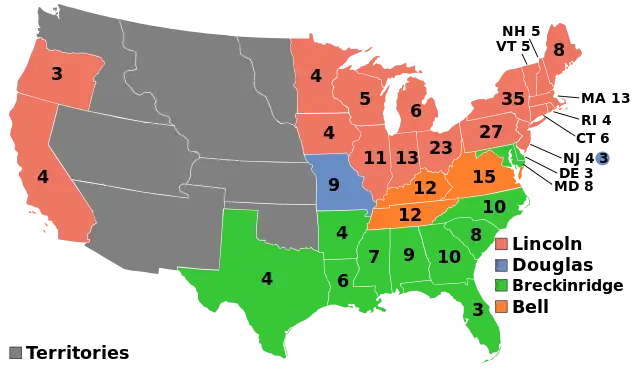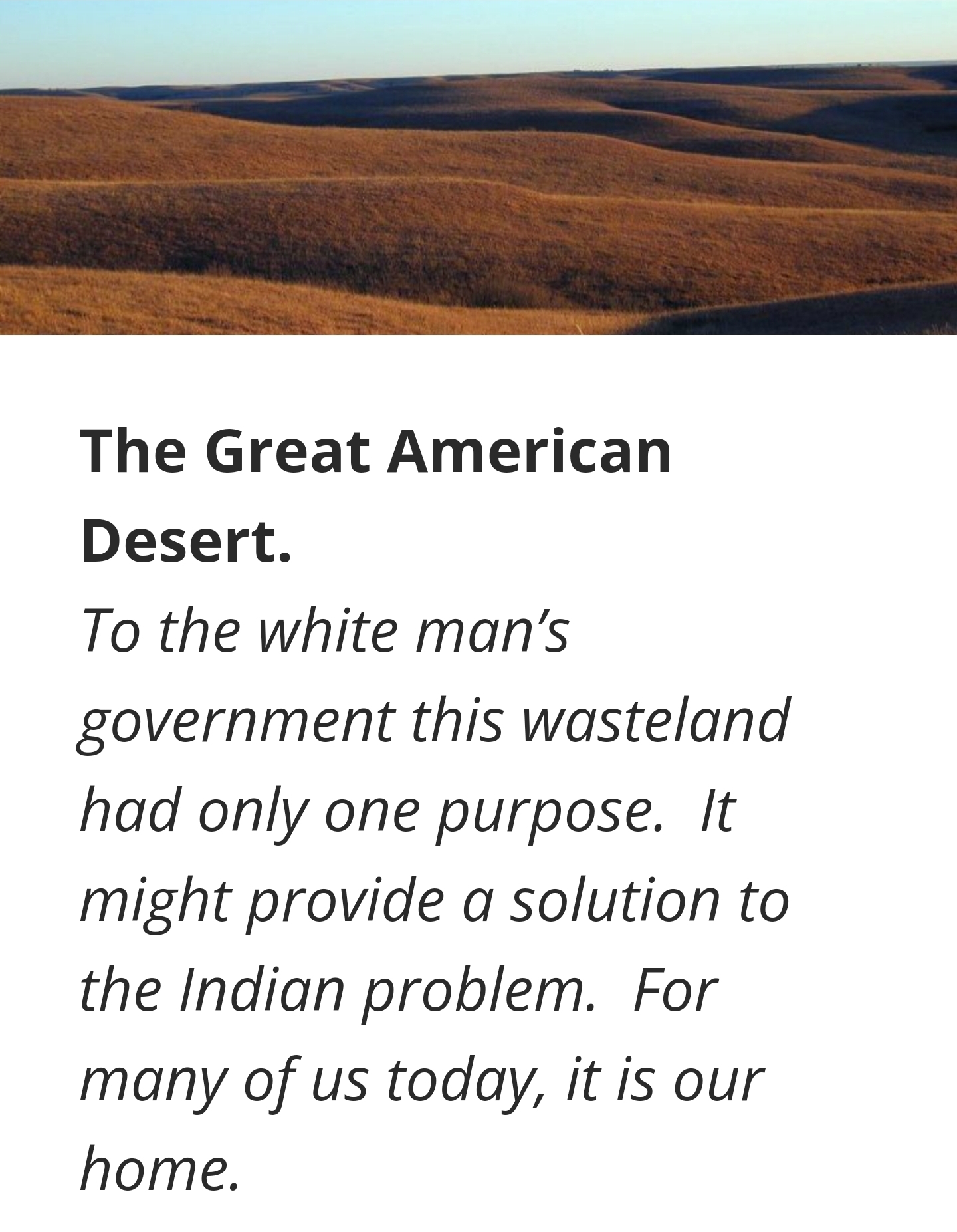“x-posted” from @Nakoichi@hexbear.net
Original twitter thread: https://twitter.com/DecolonialMarx/status/1736248614035272113
There’s a lot of misleading things about this presentation; for one only the poorest of people were crossing the plains and Mountains. Instead those who could afford it preferred to sail to Nicaragua and walk across the isthmus, to then sail up to the West Coast. Yes the mountains were tough to pass, but not because they are mountains, but because the easiest paths are controlled by, and tolls are enforce by Indigenous nations across the west. Meaning it was not the Mountains that discouraged them, but instead the idea of following Indigenous laws; i.e. it’s a political barrier. This barrier prevents a western expansion preferring instead almost a Roman style, build a fort around your enemy, style of invasion.
Palo Alto was further from the White House than it was from Mexico City. Frémont felt safe massacring unarmed indigenous groups in 1846, but the Anglo settlers were vastly outnumbered, and the tables could turn fast -never mind the European powers and wildcards like Russia and the Chinese. In the West, the United States was out on a limb. What the United States needed was for a bunch of people to go to California and stay there, anchor the territory, and ready it for statehood. The problem was that there were not a whole lot of reasons for settlers to try it. The sea routes around the Cape of Good Hope or down to British Nicaragua and up the West Coast after an overland trek were long, dangerous, and expensive; the Oregon Trail across the continent was even worse. When they got to the California territory, settlers found unsurpassed natural beauty and unbelievable biodiversity, but the pecuniary prospects the only thing that could lure them in large numbers were not all that great at first. There was plenty of land but no one was especially enthusiastic about working it for profit. Indians comprised the vast majority of laborers (as they comprised the vast majority of the population), but their connection to the land always left them an exit if the contracted terms were insufficiently remunerative.
So while people like Leland and William Randolph Hearst’s dad fled the eastern side of the Mississippi after ending slavery cut into prophets, it became clear it was very easy to rip people off in California; and anti-slavery laws didn’t apply to Indigenous workers who were disregarded as people, so remained a cheap if not free source of labor. A lot of folks then assume the railroad was made to cheapen the costs of traveling to the west, but in reality that was more of a marketing ploy by a group known as the Combine, or ‘the Associates’ that Leland Stanford would be made a de facto face of, hell he was even made the de facto governor. According to the eugenics science that was pioneered in Stanford University later in Leland’s life, he was a great man because of great genetics. In reality it is birth lottery, as is always the case, and a uncanny ability to somehow take credit for everyone else’s work making him the best of the capitalists.
He couldn’t even pretend to be self made. Even his associates often made jokes about how all of his money is made for him, he doesn’t have to do anything. At any rate it was land speculation by which this profit was made, just as George Washington’s was made before him, this business was the American dream; the get rich quick scheme. One that practically presents itself to him after squandering the perfect opportunity he had on the Erie Canal. These excerpts come from Palo Alto a must read for movement members today.
After an apprenticeship, he opened his own law office, which suffered from his total lack of German-language proficiency, given that German immigrants formed the bulk of the settler population. A run for district attorney on the progressive Whig line flopped. In 1850 he briefly returned to Albany to marry Jane Lathrop, a merchant’s daughter from his hometown milieu. Back in Port Washington, Leland’s office burned down, taking with it his law books and legal career, such as it was. Leland’s life to that point - he was in his mid-twenties - was a total loss. Despite the cosmic luck of being born alongside the Erie Canal, he’d squandered the little he put together. What he did have left was family, including four surviving brothers. He (scandalously) deposited his new wife back home, and set out to join the rest of the Stanford boys in California. With his family’s support, he took the ritziest of the three routes west: a ship down to British-occupied Nicaragua, an overland trek, and another boat up the continent’s flank.
Born at the edge of a commercial frontier, Leland was a restless young man, moving from mediocre school to mediocre school, performing in accordance with his surroundings. Leland liked reading more than he liked working, and he didn’t like reading all that much. He decided on a career in law, perhaps with a quick transition to politics, a professional path forever beloved by ambitious slackers. A politician needs a good name, and so Leland dropped the biblical Hebrew Amasa, which, fittingly, means “burden.” The frontier had lower standards than New York did, so he took the law books his father bought him and in 1848 moved to Port Washington.
Most people didn’t see the value in California 'til after 1848, but those who did saw the same vision the Combine had, and with a very small initial investment of 20k the transcontinental railroad was underway and heavily subsidized to drive the land speculation markets. Because of the rails maneuvering their way into prominence through clever marketing (as it remains cheaper to ship by sea just as it was back then) and began to sell land along the rails to settlers moving across the west.
The next morning the first passenger car passed from the Union Pacific to the Central Pacific tracks, and the inaugural batch of imported tea departed for the East, linking West Coast international trade to the nation’s financial centers via rail. This was more branding than anything else-goods from the East were just as easy to send to New York by boat, especially with the Suez Canal up and running-but the settler nation celebrated nonetheless.
In 1862 is when this happened, and this disregard (or most likely contempt) for Indigenous nations was an obvious underpinning of a long standing California and American history, of working class people organizing genocide campaigns for low wages and poor compensation. By 1866 the wanton murder and economic turmoil brought by the railroads, and the mining oligarchs funding them, are similar to the oil man camp issues we see today. Destruction of land, stealing of resources, rape and murder of women, children and elders; would lead to Red Cloud’s War and the 1868 Treaty of Ft. Laramie which established our nation on the basis of the Missouri and Montana River’s watershed. This was done by extensive multi-year survey but to this day we have Lakota people who are Asian because of Chinese workers who fled to our communities after being sold to white trading posts by their family if debt got to high. A sad reality, but one people forget when they think Indigenous is a race, and that you can homogenize all of us.
It was only the year before the treaty was signed, that Marx wrote his famous Das Kapital, meanwhile the Oceti Sakowin had won a war and wrote the treaty demanding communal ownership of land, continued self-determination, continue denial of the use of the money form in our economy, infrastructure like blacksmiths to create pig iron, and so much more it is no wonder our later leaders like Crazy Horse and Sitting Bull presented a People’s War. Their guerilla tactics being as well studied as anything Che did.
In reality the railroads primary purpose was the destruction of the Plains nations, this railroad wasn’t economically useful UNTIL the genocide and displacement of our nations. This is most exemplified by the fact the 60 million strong continent traversing herd was split by these rail roads, and a Army sponsored campaign (whose motto was ‘one dead buffalo is a dead Indian’) that provided bullets and guns to wantonly murder buffalo to ease the boredom on passenger trains. This is also the history the term ‘removed’ comes from where buffalo hides were valued at the same price as our scalps and were interchangeable, again because ‘one dead buffalo is a dead Indian’.
This railroad was the long standing dream of Indian killers that founded the US, so it should be no surprised when someone like Grant Shows us perfectly the extent that liberalism would never have been enough even if reconstruction went perfectly; and perhaps the words of Harvard fellows and graduates shouldn’t be as valued as they are by Marxists (looking Cornel West as well as pre-Marxist Du Bois being cited by ‘patsocs’ to deny Indigenous sovereignty, or famous NDNs who had fellowships there and now love to let billionaires and actors tokenize them without standing up) This is to say genocide is normal in liberalism and waiting for genocide to begin calling liberalism fascism, misses an important fact, that MANIFEST DESTINY INSPIRED ZIONISM, FASCISM, NAZISM and whatever else you want to call it; America is its origins. So anyway the mountains in the way were the people, the people of the Oceti Sakowin resisting class society being forced on them after already overcoming these contradictions multiple times before.
I appreciate you reposting these threads to lemmygrad now as the twitter algorithm usually seems to not want to show them to me.
The quotes are from the book Palo Alto: A History of California, Capitalism, and the World by Malcolm Harris. We consider this book required reading for Communists in North America. You can find it in the Chunk Luta Library.
Some more facts about transportation between the west coast and the NA east:
- It’s around 2000 USD cheaper per container to ship from LA to Memphis through the Panama canal than it is by overland train.
- The railways cost the lives of 1200 Chinese workers (who had already been racially barred from mining labor by California’s white working class).
- Of the three primary routes to California (and Portland/Vancouver), most went by boat, despite the boats actually being more deadly due to diseases. The demand for crossing Nicaragua/Panama spurred the development of the Panama Railway, further making the boat trip to central America the fastest and easiest method, still the priciest. Overland was actually considered the safest, but again, settlers that could afford not to, did not want to cross through “enemy territory” to get to California opportunities.
- Lewis and Clarke, as a slight tangent, didn’t really have that tough of a time traveling to what would become Portland, no more than usual for overland trips like that. What put them in the most danger was misbehavior towards the native peoples. In one instance, the L&C party threatened natives seeking a toll with a vial they claimed was smallpox to avoid payment.
- Mind you, the 1860 electoral map looks like this. California and Oregon became states before the plains and any of the mountain west was colonized and settled. Many of these areas only became states nearly 50 years after California.

As a non-American I would appreciate some additional background. I read the post and understood it but I’m missing a lot of context so bear with me.
Seeing how California became a state before (for example) Oklahoma, is it correct to say that California was more sought after by genocidal settlers than Oklahoma? If yes, then why?
Oklahoma was the “Indian State” that the so-called 5 Civilized Tribes (Cherokee, Chocktaw, Seminole, etc.) were relocated to during the Trail of Tears which ended in 1850. The land was chosen for them because it was the eastern edge of the “Great American Desert”. These are corn farming nations and they were moved to an unirrigated plain, as you can expect, many starved to death from crop failure.

California and Oregon were valuable for gold, extensive salmon runs, lots of fresh water (in the northern areas) massive forests for logging, and the central valley was formerly a massive lake so the soil was fertile (which was still around until the settlers drained it.).
The last part is that the Spanish had already killed many indigenous people so the number of natives was already low, even then, California peoples were not military cultures like those of the plains and basins like the Diné (i.e. Navajo), the Bannocks, or the Lakota.
Thanks
It’s mostly a geography thing. That region of America is very barren, even now. It doesn’t offer many resources to the settlers that can’t be found on all the other territory they stole.
Thanks
The more I learn how North America was colonized the more disgusted I am.
Thank you so much for sharing. This was informative and infuriating.
Mfs tryna avoid the Troll Toll
it was very easy to rip people off in California; and anti-slavery laws didn’t apply to Indigenous workers who were disregarded as people, so remained a cheap if not free source of labor.
Man, have things not changed.






